AI for all – inclusive technology is a collective responsibility
Disability issues
17 Jun 2025
Artificial intelligence is developing at a rapid pace. How can we ensure that no one is left behind? This was discussed at the UN COSP18 in New York.
Policy makers, disability advocates, experts and authority representatives came together to discuss the need for inclusive, fair and accessible AI tools, and the possibilities of providing these tools. The side event AI for all can be watched on UN Web TV.
Heba Hagrass, UN Special Rapporteur on the rights of persons with disabilities says that AI offers new tools to dismantle barriers.
– But it also poses new threats, particularly to those already facing discrimination, Heba Hagrass says.
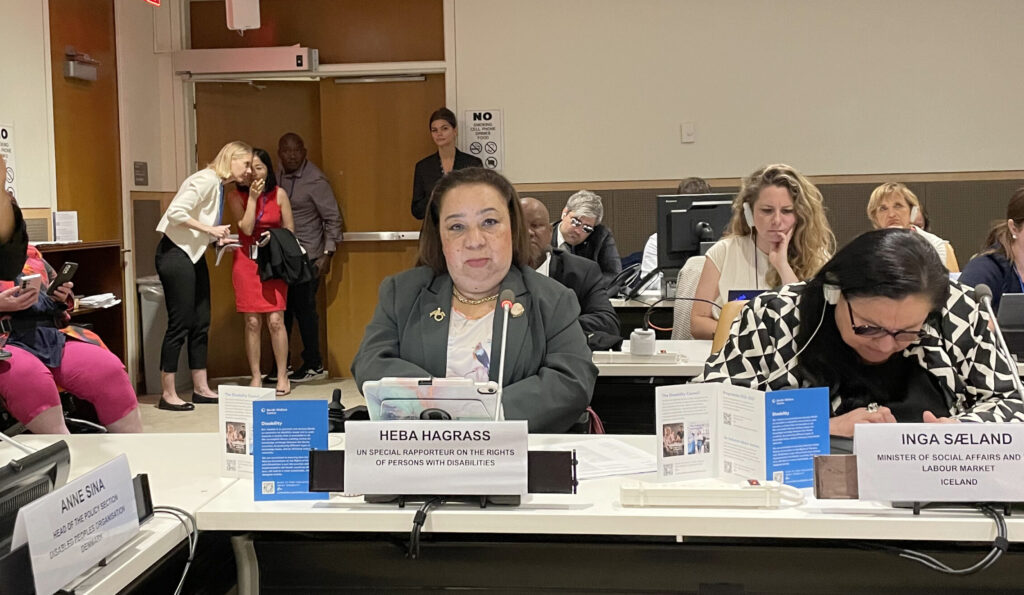
She lists several key steps for more inclusive, accessible and ethical AI, starting with better data to ensure that AI systems also account for experiences of persons with disabilities.
- Accessibility and universal design must be the default, not an afterthought.
- Governments and companies must involve persons with disabilities directly in designing, testing, and overseeing AI systems.
- Regulatory frameworks must prevent discrimination and ensure accountability.
- AI tools must be affordable, especially in low resource settings.
UN special rapporteur Hagrass places greater emphasis on the collective responsibility to develop inclusive AI.
– International cooperation is essential to ensure AI is developed and deployed inclusively, and adheres to principles of universal design, says Heba Hagrass.
AI improving everyday life
Several speakers highlighted the potential for AI to improve the lives of persons with disabilities. AI can be used to improve the ability to participate, live independently, receive information, communicate, study and work,
Maryanne Emomeri from United Disabled Persons of Kenya illustrates a practice from her home country that can be used globally: using AI to convert texts into plain language.
– Easy to read-formats simplify complex information using plain language, short sentences and visual support. AI tools can now automatically generate easy versions of policies, legal documents, health information and civic materials, says Maryanne Emomeri, using a text-to-speech app in her mobile phone to give her comments at the side event.
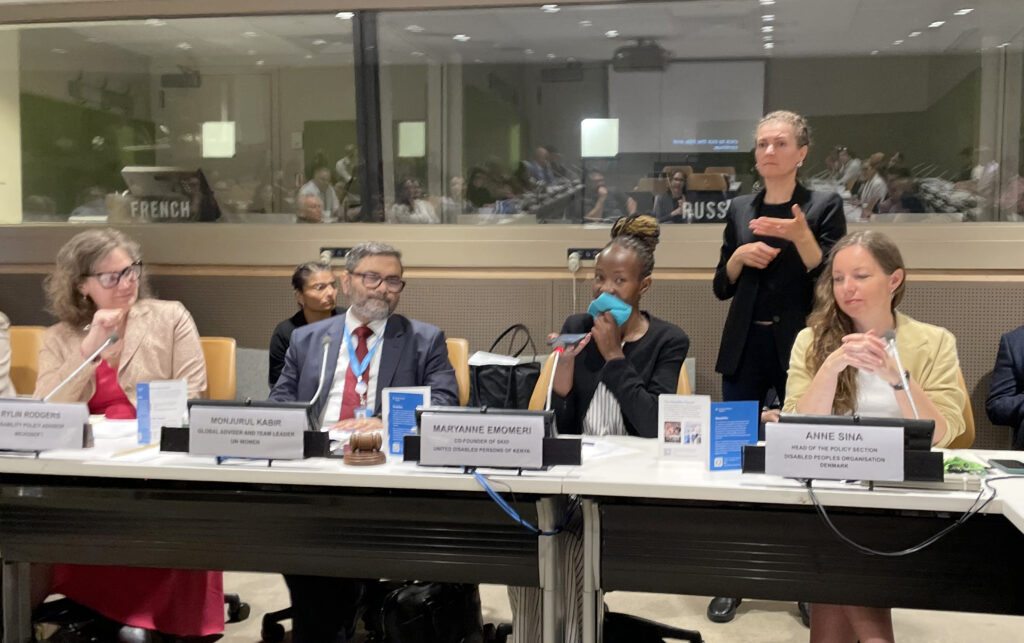
An example from Denmark is the app Be my Eyes, and the further developed version Be my AI. Anne Sina, Head of the policy section at Disabled Peoples Organisation Denmark (DH) says that listening to needs in society is key for developing inclusive services. Be my AI lets the user take a photo and then provides a detailed AI-generated description of it.
– This way technology makes it so much easier to get help in everyday life and can significantly lower the threshold for seeking assistance. It can be a game-changer for persons with disabilities, but only if we think about how we include them throughout the whole process, says Anne Sina.
AI tools simplifying economic decisions can be very helpful for persons with cognitive disabilities. Malin Ekman Aldén, Director-General at the Agency for Participation in Sweden mentions AI apps where you can manage and plan your own economy.
– “How much can I afford?” You may think these are simple decisions, but for this group, this is something they have been denied so many times, and they may be dependent on someone else’s decisions, says Malin Ekman Aldén.
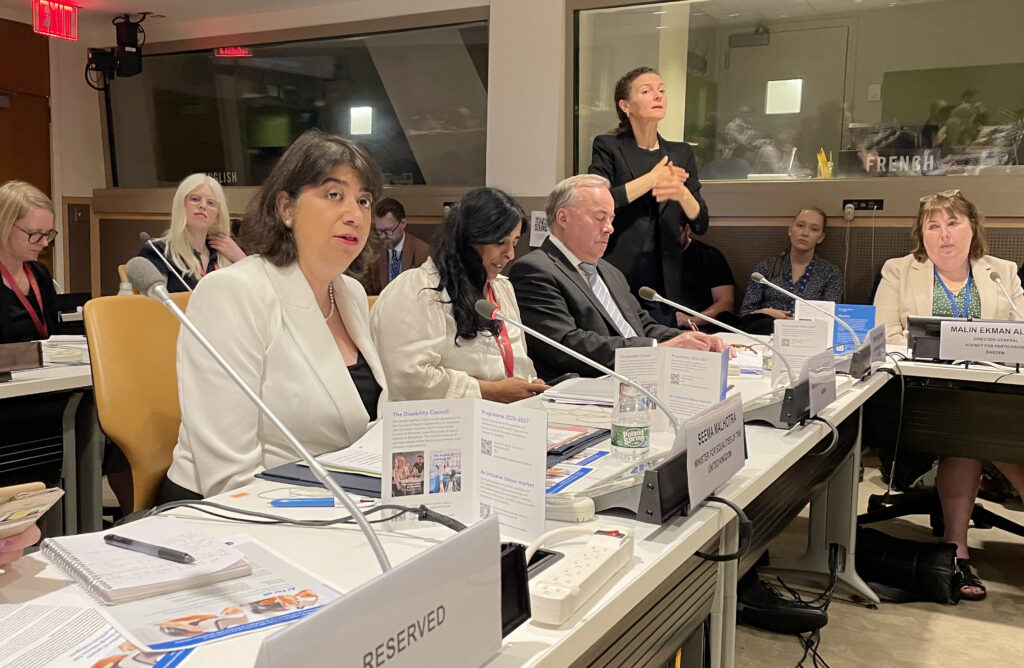
Seema Malhotra, Minister for Equalities of the United Kingdom shared steps the UK is taking to promote more inclusive assistive technology.
– We are investing resources for research on the development of AI technologies that meet the needs of users with disabilities. The UK government supports a flagship assistive technology research and innovation program called AT 2030, led by the UK’s Global Disability Innovation Hub, says Seema Malhotra.
Bias, stereotypes and fears
Several speakers voiced concern over ways in which AI may contribute to exclusion, amplify bias, or reinforce barriers.
UN Special Rapporteur Heba Hagrass states that for persons with disabilities, the stakes are very high.
– AI can foster equality when it comes to enjoying human rights, but it can also amplify exclusion and ableism, says Hagrass.
In AI-generated material, persons with disabilities are often misrepresented or simply missing.
– The widespread use of AI in content generation carries a significant risk of perpetuating existing stereotypes about persons with disabilities, says Eiður Welding, Chair of UngÖBÍ, Iceland.
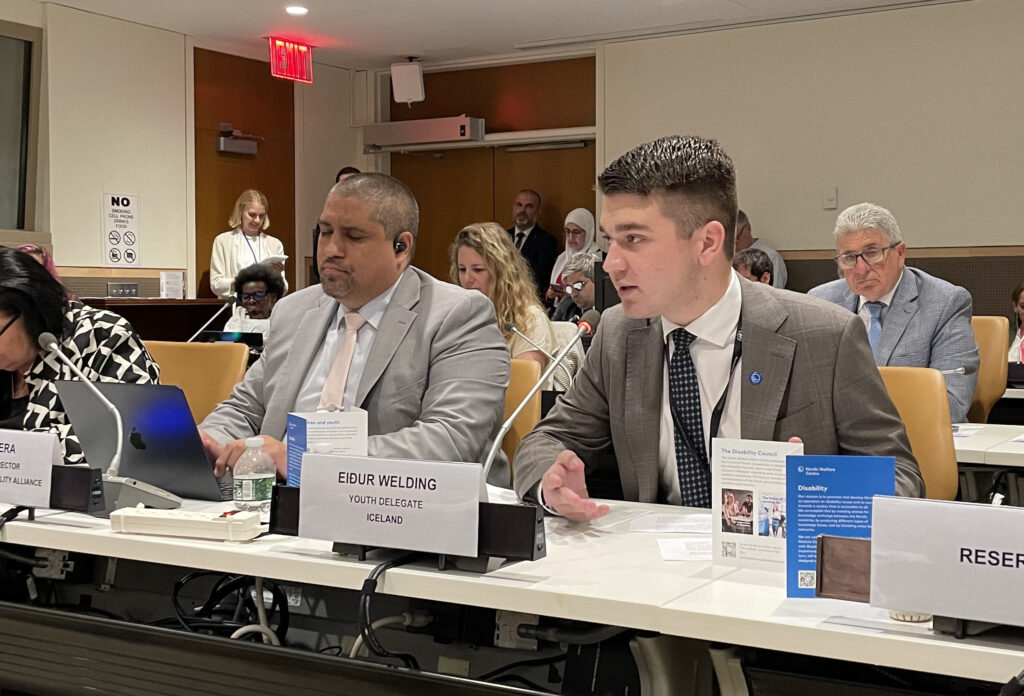
The ever-better language models make it easier for malicious actors to generate convincing scams.
– This poses a heightened risk for persons with disabilities, particularly those with cognitive or intellectual disabilities, or those with limited digital literacy, says Eiður Welding.
Participation in technological development
The speakers at the side event all pointed out the need to involve persons with disabilities when creating, regulating and assessing AI tools.
The International Disability Alliance, IDA, calls for greater participation by persons with disabilities in developing new technologies, says José Viera, Executive Director of IDA.
– AI should be tested against not only what we understand is needed, but basically against what persons with disabilities are saying, and against our needs and demands, says José Viera.
One of the world’s largest tech companies, Microsoft, was represented at the side event. Rylin Rodgers, Disability Policy Advisor at Microsoft, says that incorporating persons with disabilities in the process is foundational.
– It has to be part of innovation, design and co-design. We have accessible design principles that were created and continually adapted in partnership with the disability community. That’s the technical side, but there’s also a practical side: If we are going to have a voice in regulation and legislation, it has to occur in partnership with the disability community, says Rylin Rodgers.
The International Disability Alliance sees inclusion in the development of technology as a collective effort.
– We all have a collective responsibility of making sure that the evolution of technology serves the needs of persons with disabilities, says José Viera.
Ministerial declaration on inclusive AI
The Nordic Ministers of Health and Social Issues and Nordic and Baltic Ministers of Digitalization have made a joint declaration on AI and rights of persons with disabilities: Promoting participation of persons with disabilities through inclusive, fair and accessible artificial intelligence.
The declaration was presented at the side event by Norwegian Minister for Culture and Equality, Lubna Jaffery.
– As we develop new technology, we have to make sure no one is left behind, Jaffery said when presenting the declaration.
A plain language version of the ministerial declaration is available via this link.
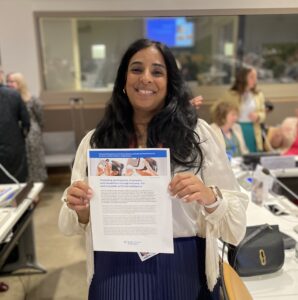
Related news
Disability issues
5 Nov 2025
